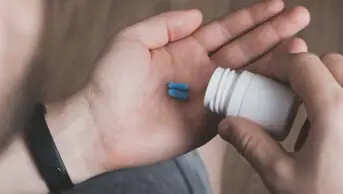The views expressed in this letter are those of the author’s. If you would like to submit a letter to The Pharmaceutical Journal, please click here.
Reading When Breath Becomes Air by Dr P.Kalanithi altered the way I perceive the art of medicine: ‘Clinical and technical excellence is never enough if you disregard the greater human significance of a diagnosis’.
The person is most important, not the patient or the illness. How often could I not recall the name or a face of patient but could recite without a glitch the medication and doses they were on? No one wants to be anonymous; no one wants to be forgotten. And then came 2020.
COVID-19 admissions were simply relentless, and I found myself engaging an emotional autopilot. Shifting focus to tailoring treatment regimens and blunting the overwhelming odds. And in doing so consistently failed to not only see the patient behind the diagnosis but the person inside the patient, sideling that all-important human significance. This is the story of N and how she brought me back.
N was a force to be reckoned with, even despite being so sick. She would call out to me by name every morning, wave through the window as I donned my PPE and would start talking the minute I walked in — even before that, more often than not. My favourite days were those when she was well enough to sit in her chair, her legs plonked on a little pull-out cushion just in front. Owing to her underlying conditions, she had expressed wishes for no invasive interventions, but those were the days where I thought she would walk out, rare moments when I allowed myself to hope.
Snow day this year was a weekend, I had volunteered to pick up an extra shift and the hospital felt dark and abandoned. I could see families playing from the window, building snowmen and making snow angels, which did little to curb the feeling that, in this second wave, the world seemed to be moving on without us.
N had not sat in her chair at all that week and a quick assessment at her bedspace confirmed something I did not want to know. All that training and all of those studies read, and there was nothing else I could do but helplessly watch. I was very much done; I was going home. And then N touched my hand and asked if I could sit with her for a bit. We talked a little like we usually did, but she now needed multiple breaths to complete a sentence. So, instead, we just sat together, watching the snow fall. After a while, I looked at N and she was beaming: “Look, how incredibly beautiful the world is.” And so it was, she had made it so again.
I am forever grateful to her for asking me to stay. That one smile would make me prouder of the job I do than all those weeks of carefully tailored treatment regimens. The person, not the patient! Look behind the diagnosis, cherish the human significance of what we do.
I had a rest day the following day and when I returned N’s bed — just like too many before hers and too many after hers — was empty.
Snow day will never be quite the same again — I hope so anyway.
Ola Kulikowska, senior specialist pharmacist, Royal Free London NHS Foundation Trust


